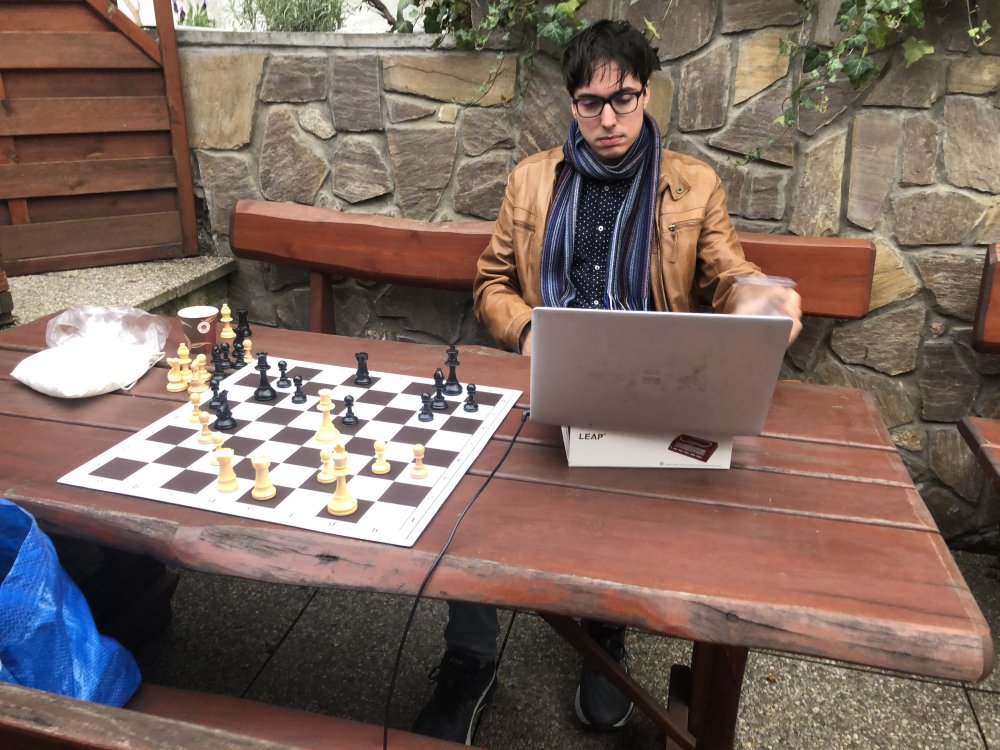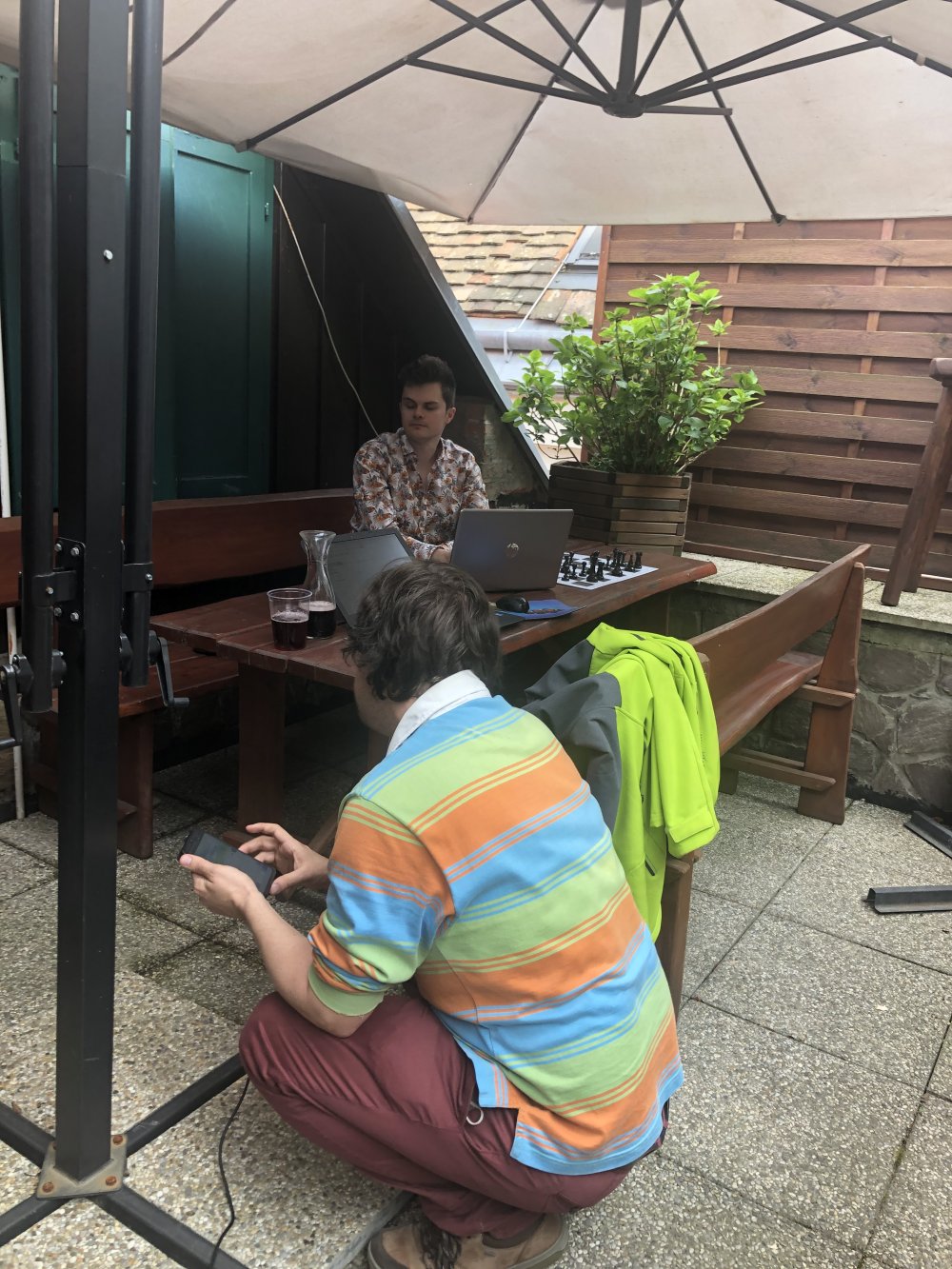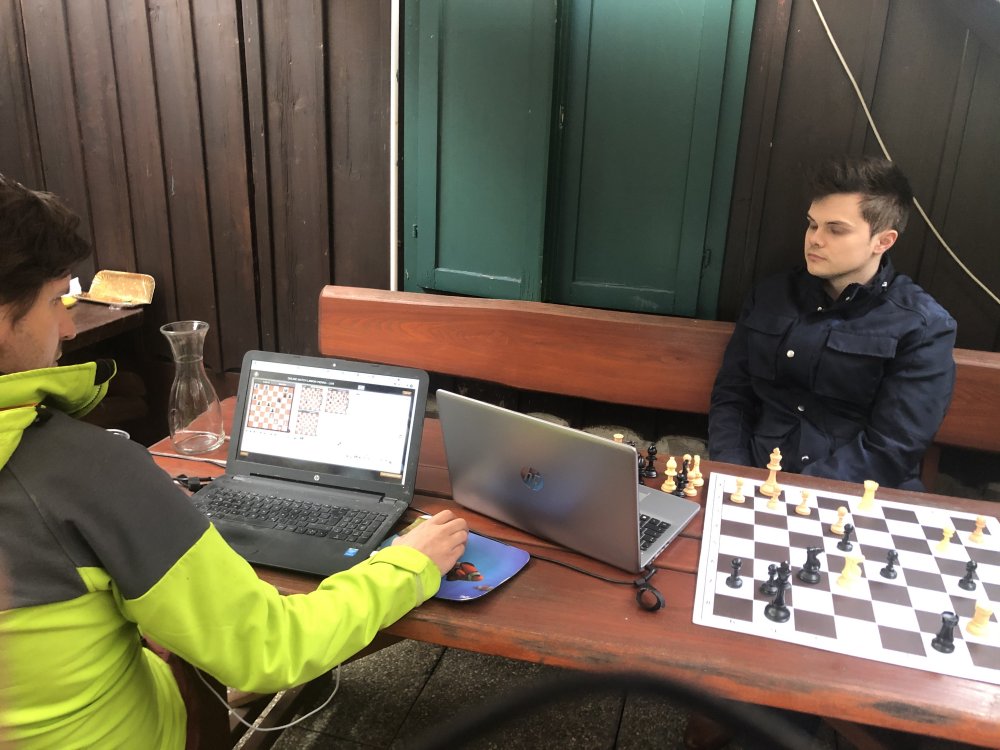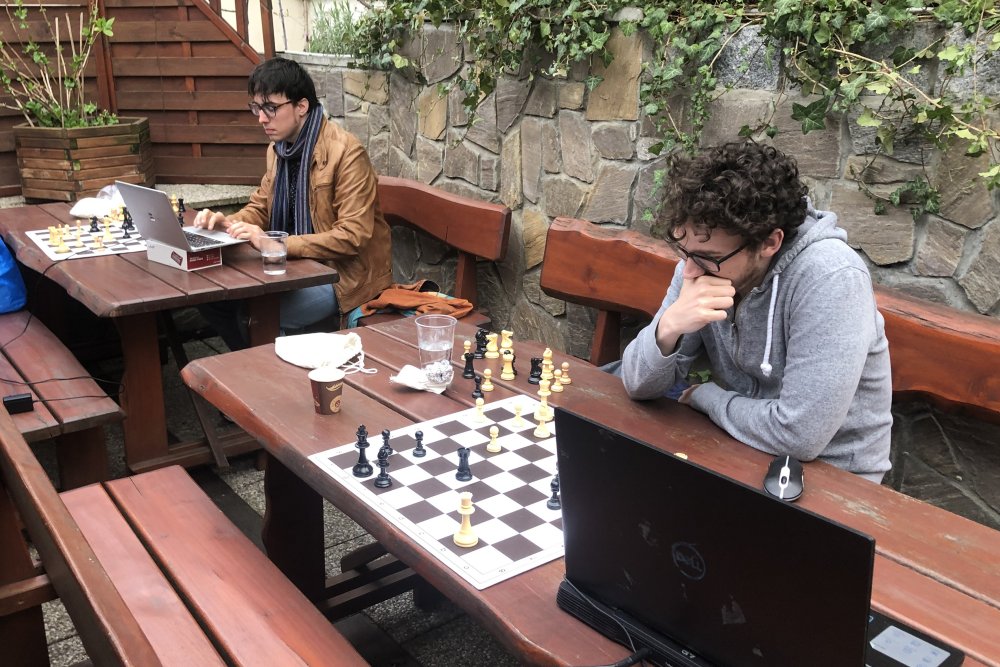Hybrid chess is not a fundamentally new invention. When Bobby Fischer was not allowed to travel to Cuba in 1965, he instead made his moves at the New York Marshall Chess Club, which were then telegraphed to Havana. The radio tournament of 1945 featured arbiters overseeing Soviet and American teams, as well. Of course, back in the day there were no computers that would have been able to provide players with useful tips.
And this is not the only thing that is different nowadays. Due to Covid-19, numerous countries do not currently allow two people from different households to sit at a distance of less than six feet from each other for several hours. In hybrid chess, the players are not in the same room. Instead, each one of them has their own chess workplace. The arbiters can oversee all moves and time limits on their computer, while also being able to ensure that neither of the players are running other software parallel to the game platform and video chat. Of course, it is forbidden to interact with a chess engine or a third party.
FIDE has recently established rules for competitive play for hybrid chess. The German Chess Federation also allows their implementation. However, the format has still barely been tested in practice.
The Mitropacup with eighty players and twenty arbiters in ten venues that ended last Wednesday with Italy winning both the Open and the Women Section was the biggest hybrid event so far. Next in line is the European World Cup qualification that start on May 24. The regular European Championship will not be taking place until late summer at the earliest, which is why the ECU has announced hybrid qualifiers, which will give the 36 best players the right to participate in the prestigious World Cup in Sochi in July. However, the first chess organisation that was serious about hybrid chess was the Catalan Chess Federation. It planned a worldwide hybrid open with tournament rooms in different countries, but it had to be cancelled in autumn due to the second wave of Coronavirus infections. This event prompted me to begin searching for participants for a Hybrid Cities Cup that was eventually held on February 20/21.
The Catalan pioneers joined in for Barcelona. Klub Offerspill, which was founded by Magnus Carlsen in 2019 and advocates the union of traditional and online chess, signed up as well, as did the Slovakian Federation with its enterprising organiser Tomas Danada. And Axel Smith brougth in TePe Sigeman from Malmö, who are famous for their Grandmaster tournaments. Axel is a climate activist in the world of chess, and according to his calculations, the hybrid tournament helped us save over 93 per cent in carbon emission when compared to a scenario in which three of the four teams would have had to travel.
We chose to employ electronic chess boards by DGT and the platform Lichess, which worked fine during test runs in each location. However, on the day of the tournament, the system repeatedly failed to register moves and subtracted time from the wrong player's clock. Although the arbiters kept correcting the errors, the platform still ended two games because it seemed as if the players supposedly had lost on time. During the third and final round, we allowed the players to input their moves directly on Lichess. The fact that not everything ran smoothly actually taught us a lot. For instance, we learned that during one's first time playing hybrid chess, it is extremely hard to perform as well as one would in a regular game.
By now, I have switched to working with Tornelo. Tornelo has been developed as platform for tournaments as opposed to free online games, and therefore offers far more options for arbiters, which is particularly useful in hybrid chess. If the Internet connection is interrupted, the player does not suffer a penalty. Instead, the clock is paused. If a player's cursor accidentally slips while inputting a move, the arbiter can correct the position on the board. Additionally, with Tornelo, players do not need to keep staring at the screen. Instead, they are reliably notified when the opponent has made their move, as a match between Berlin and Vienna in March of this year showed.

Anatol Vitouch

Peter Sadilek

Fabian Matt and Schiri Phil Scheffknecht

Great care had been put into organising the Small Nations Chess Cup carried out last week. Ten players across eight rooms (Michael Wiedenkeller from Luxemburg won) and an even greater number of arbiters were involved. According to head arbiter Marco Biagioli, everything worked out nigh-on perfectly.
From 4 to to 12 May the Mitropacup took place. Male and female teams from ten different countries were competing. Portugal was not among them. In need of a test for the Worldcup Qualifier the Portuguese Chess Federation asked me to find a partner team. Several teams that were initially interested had to decline, because large parts of Central and Northern Europe are still in the midst of a lockdown.
I thus decided to swiftly assemble a team by myself in my second home in Vienna. The greatest challenge was finding a venue. Indoor meetings involving people from different households are not allowed, so we decided on a garden, which had to be large enough for four participants to play in accordance with social distancing rules while also being protected from sun, wind and rain.
We found the right locale at a traditional Viennese inn. Birds were chirping, passersby greeted us from across the fence, and depending on the wind, we could hear a nearby motorway. While masks were mandatory in the three rooms of the Portugese Chess Federation in Lisbon, the Viennese players could breathe freely and performed quite well as a result - aside from a blunder in one game, which cost the team that was slightly weaker in terms of Elo-rating a possible 3:1 win. However, the final result of 2:2 was far less significant than the experience itself.
"In view of the situation, this is the best competitive format one can hope for," Fabian Matt stated. The most significant difference players observed in comparison to regular games was the fact that they could only see their opponents via Zoom. The Internet connection was lost a few times due to the overwhelming flood of data generated by the video conference running in parallel, although this was usually only noticed by the arbiter. Future experiments are something to look forward to. With its built-in video function, Playchess would be a great platform for testing.
About the games
Menezes – Cumming
follows Carlsen - Grischuk, 2019 https://de.chessbase.com/post/norway-chess-runde-3-carlsen 12.Bxc5 Bxf3 13.gxf3 Rc8 14.Bb4 Qc7 with compensation. 13.h3 is a loss of tempo. 18...f5 is strong. 20...Bxc3 would have given Black more of an advantage. 32...Qb4 was the last chance to fight.
Martins – Sadilek
12.b3 is too tame. After 12...d5 White should exchange everything to reach equality. 31...Qe6 is of course bitter, much more so after Sadilek had rejected 30...Qe6 because of Rxd4 verwarf. A result of months of online chess.
Matt – Dias
15.Qg4 is a strong pawn sacrifice. 19...Qf6? 19...g6 is ugly but the game continuation is practically lost for Black.
Rocha – Vitouch
6.bxa3 might be necessary, according to Vitouch in the game the compensation did not quite suffice, but Rocha posed enough problems and in the endgame it is Black who has to be a bit careful.
Partien:
Games of the Mitropacup Hybrid Tournament
Women's Tournament
Links
-Translation by Hugo B. Janz



























